

Main Venue Twelve Sights International Gardens Domestic Gardens Corporate Garden Masters’ Garden Specialized Gardens
Activity ServicesRecommended Itineraries Rental Information Retail Outlets Volunteer Service Transport Information
Online Expo Hi-tech Expo5G Sapiential Expo Robotics Internet of Things
Ticket Media CenterXinjiang Garden:Heavenly Mountains, Charming Xinjiang
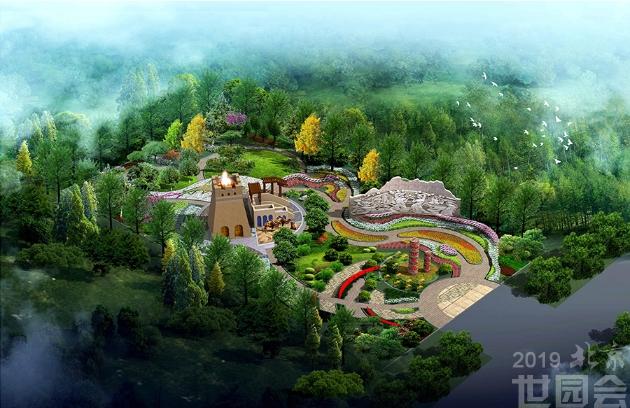
Beijing Expo 2019 takes “Live Green, Live Better”as its theme, with the concept of “integrating gardening into life and moving hearts with nature”.The park is located in the southwest of Yanqing District, spanning across the Guishui River, adjacent to the New City of Yanqing in the east, about 10 kilometers away from the Badaling Great Wall in the south and the Haituo Mountain in the north. The park is composed of three parts: the enclosed area, the unfenced area and the World Expo village. The enclosed area covers an area of 503 hectares, featuring“one center, two axes, three belts and multiple zones”. The Xinjiang Garden is situated in the “Chinese Horticulture Exhibition Area” in the south of the park, and can be reached from the main entrance of the park via the Shaanxi Garden. It covers an area of 2,000.66 square meters.

The design of the Xinjiang Garden combines the theme of Beijing Expo 2019 with the characteristics of Xinjiang, interweaving the unique natural and cultural resources of Xinjiang with its characteristic industries so as to create a unique landscape with distinctive Xinjiang characteristics.
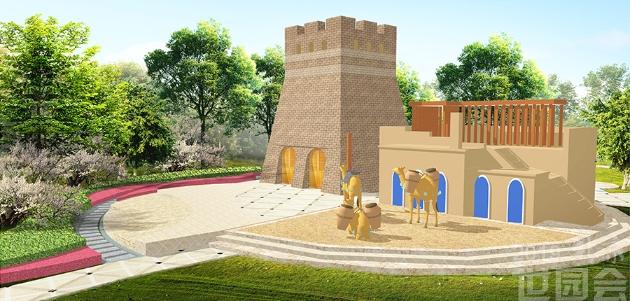
The garden integrates the concepts of Belt and Road and focuses on Xinjiang characteristics by showing the new development and the modernity of Xinjiang. Creating a scenery from a mainly 2D perspective can also achieve the goal of reflecting ethnic culture in natural landscape and showcasing the rapid development of Xinjiang. The garden highlights Xinjiang’s historic role as an important node in the construction and development of the Silk Road Economic Belt as well as its fruitful achievements asthe frontier ofthe Belt and Road construction.

The garden uses the unique geography and topography of Xinjiang as its vehicle, combining the large-field flowers representing the Silk Road Economic Belt in Xinjiang with the “high-speed railway theme road” representing the 21st-Century Maritime Silk Road to design its tour route, decorating it with the unique trees and flowers in Xinjiang, and integrating the long history and culture of the Western Regions. The elements intertwine and interweave to achieve the esthetic goal of“part for whole, small for big and appearance for connotation”, enabling the visitors to fully feel the happy life of the people of Xinjiang and appreciate the beautiful natural sceneries of Xinjiang.
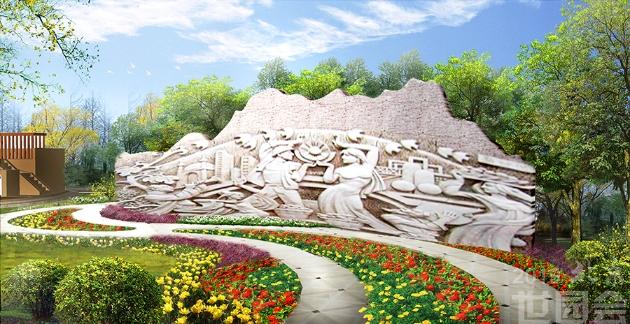
“Ancient Road in West Regions, Green Ribbon of Oasis” is the theme of the Xinjiang Garden. Both the Belt and the Road are integrated into this theme. With the main buildings as its nodes, the garden links the Road with the Belt - the confluence of the ancient and the modern as well as the connection of different regions.
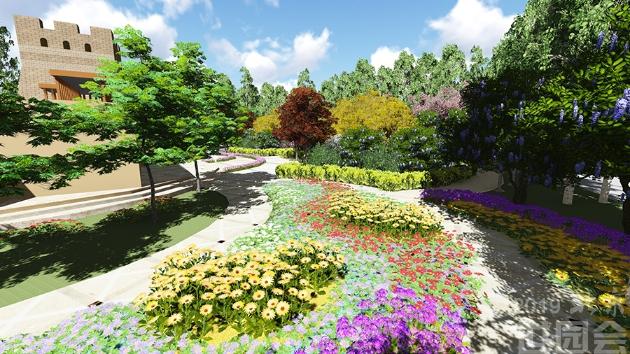
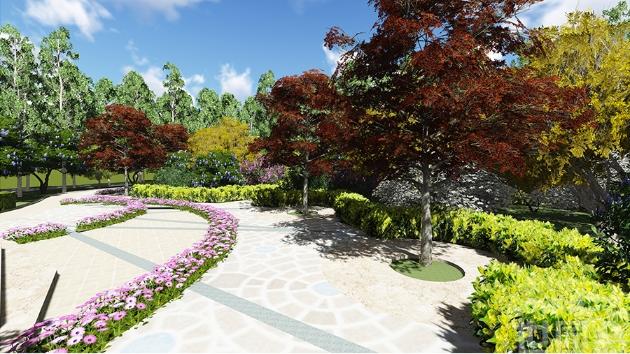
In terms of plant arrangement, different plants are arranged in different areas according to the different definitions of these areas. In terms of spatial layout, paths, landscape ornaments and lighting facilities are used to enrich the layers of the garden. In the process of planting, trees, shrubs and ground plants are interspersed to create a special atmosphere.
Some distinctive plants are planted in some specific areas to represent the Xinjiang essence. These plants include Tianshan spruce, Xinjiang poplar, Gobi red willow, Populus euphratica and lavender. The whole garden is surrounded by Populus bolleana to create a natural forest line. The east side of the garden is dominated by the characteristic forest trees and fruit trees of Xinjiang, and the west side shrubs with colorful leaves. At the back of the garden, there is a courtyard-themed scenery featured with melons and vines, creating a unique scene of Xinjiang plants.

 Explore new horizons, establish new models. 2019 Beijing Expo is about to closing
Explore new horizons, establish new models. 2019 Beijing Expo is about to closing 7.8 mln tourists visit Beijing horticultural expo
7.8 mln tourists visit Beijing horticultural expo "Macao Day" event held at Beijing horticultural expo
"Macao Day" event held at Beijing horticultural expo Zambia National Day event held at Beijing horticultural expo
Zambia National Day event held at Beijing horticultural expo Forum themed "A Promising Material" held at Beijing horticultural expo
Forum themed "A Promising Material" held at Beijing horticultural expo "Hong Kong Day" event held at Beijing horticultural expo
"Hong Kong Day" event held at Beijing horticultural expo Beijing horticultural expo holds "Ghana Day" event
Beijing horticultural expo holds "Ghana Day" event "Guinea Day" event held at Beijing Int'l Horticultural Exhibition
"Guinea Day" event held at Beijing Int'l Horticultural Exhibition "Britain Day" event held at Beijing horticultural expo
"Britain Day" event held at Beijing horticultural expo "Papua New Guinea Day" event held at Beijing Int'l Horticultural Exhibition
"Papua New Guinea Day" event held at Beijing Int'l Horticultural Exhibition